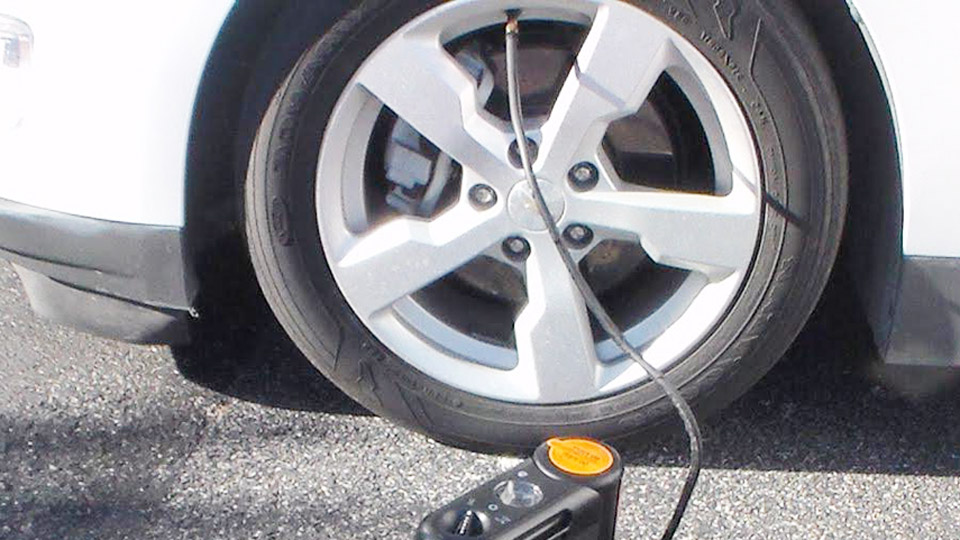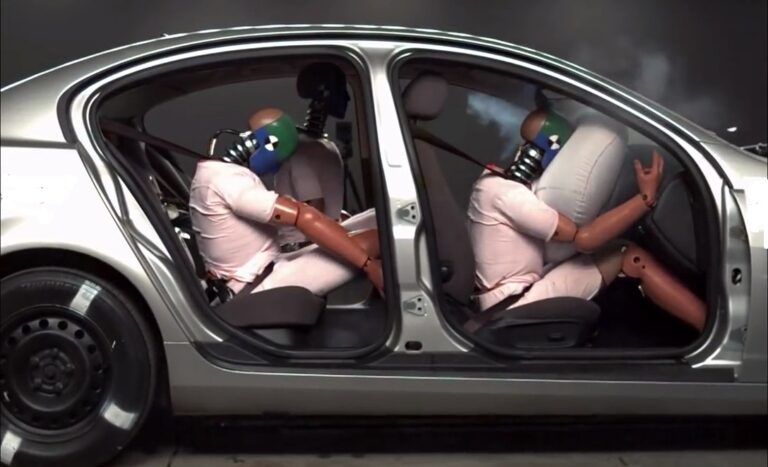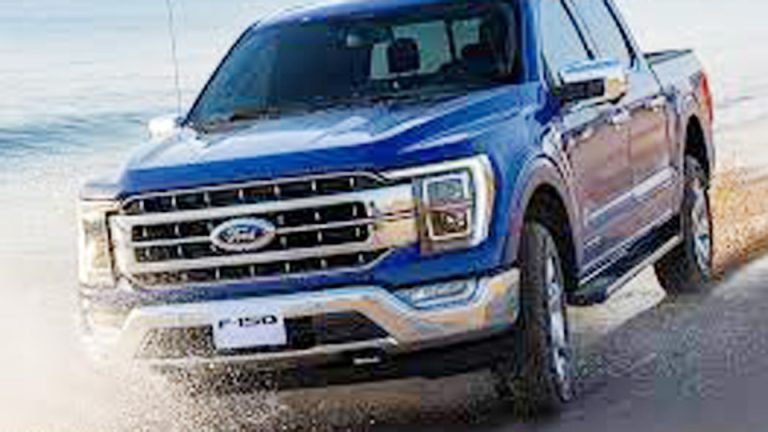When I first switched to nitrogen in my tires, I was all in—better pressure stability, less frequent top-ups, and a smoother ride had me convinced. But then came the day I was low on tire pressure, miles away from a nitrogen refill station, with only a regular air pump in sight. I stood there wondering, Can I just top it off with normal air, or will that mess everything up?
Having been through that exact situation—and doing some research plus talking to a few seasoned mechanics—I learned the truth firsthand. Yes, you can mix regular air with nitrogen in a pinch, and your tires won’t explode or fail. But it does come with a few trade-offs you should know about.

Image by carfromjapan
I’ll walk you through what really happens when you put normal air in nitrogen-filled tires, what it means for performance, and whether it’s a smart long-term move. If you’re caught in the same situation I was, don’t worry—you’ve got options, and I’ll help you make the best one.
What Are Nitrogen-Filled Tires?
Before we get into whether you can put normal air in nitrogen filled tires, let’s clarify what nitrogen-filled tires are. Regular air is about 78% nitrogen, 21% oxygen, and a mix of other gases with some water vapor. Nitrogen tire inflation uses nearly pure nitrogen—around 93-99%—pumped in with a special generator.
Nitrogen’s drier and leaks slower than air, which helps with pressure stability and wheel corrosion. I first tried nitrogen in my RAV4 when a shop offered it with new tires, and it got me curious about how it compared to the air-filled tires on my Silverado. This background helps us understand the impact of adding regular air.
Nitrogen vs Air
Why does nitrogen behave differently? It’s simple science. Nitrogen molecules are slightly larger than oxygen molecules, so they leak through tire rubber more slowly. Nitrogen is so dry, unlike regular air, which has moisture that can cause pressure swings or rust wheels.
I noticed this with my CR-V—air-filled tires lost pressure faster in cold weather than my nitrogen-filled RAV4’s tires. When you add normal air to nitrogen tires, the air’s oxygen and moisture dilute the nitrogen’s purity, reducing its benefits.
Can You Put Normal Air in Nitrogen Filled Tires?
The short answer is yes, you can put normal air in nitrogen filled tires, but it’s not the best choice. Adding regular air introduces oxygen and moisture, which can undo some of nitrogen’s advantages, like consistent pressure and corrosion resistance. I’ve done this myself—once with my RAV4 when I was stuck at a gas station with a low tire and no nitrogen nearby.
The tire held up okay, but I noticed it started losing pressure faster than my other nitrogen-filled tires. While mixing air isn’t a disaster, it reduces the benefits you paid for. Let’s break down what happens, the pros and cons, and how to handle it.
What Happens When You Mix Normal Air with Nitrogen?
When you put normal air in nitrogen filled tires, here’s what I’ve seen happen:
Reduced Pressure Stability
Nitrogen’s main perk is that it leaks slower, keeping tire pressure steady. Air’s smaller oxygen molecules and moisture leak faster, especially in extreme temperatures. After topping off my RAV4’s nitrogen tire with air, it dropped about 3 psi in a month, compared to 1 psi for my other nitrogen-filled tires. It wasn’t a huge issue, but I had to check it more often, like my air-filled Silverado.
Increased Corrosion Risk
Nitrogen’s dry nature prevents rust inside alloy wheels. Regular air’s moisture can cause corrosion, especially in salty or humid conditions. My Silverado’s air-filled wheels showed some rust inside after a snowy winter, while my nitrogen-filled RAV4’s wheels stayed clean.
Mixing air into my RAV4’s tires brought back a slight corrosion risk, though it wasn’t noticeable right away.
Minor Impact on Fuel Economy
Stable pressure improves fuel efficiency by reducing rolling resistance. Mixing air can lead to faster pressure loss, slightly hurting mileage. My RAV4’s fuel economy dipped by about 0.5 mpg after adding air, compared to its nitrogen-only days. It’s not a dealbreaker, but I noticed it on long highway trips.
More Frequent Maintenance
Nitrogen tires need checking about once a month. After adding air to my RAV4, I had to check that tire weekly, like my air-filled CR-V. The convenience of nitrogen took a hit, which was a hassle when I was busy.
When It’s Okay to Put Normal Air in Nitrogen Tires
Sometimes, you’ve got no choice but to use regular air. Here’s when I’ve done it and why it’s fine in certain situations:
Emergencies: If your tire’s dangerously low and you’re far from a nitrogen fill, air’s okay to get you moving. I used air on my RAV4 during a trip when a screw caused a slow leak.
Temporary Fix: If you’re planning to hit a shop soon for a nitrogen top-off, air can tide you over. I did this with my CR-V and got a nitrogen refill a few days later.
Low Nitrogen Purity: If your tires already have some air from past top-offs, adding more won’t make a big difference. My Escape’s tires were a mix after several top-offs, and air worked fine temporarily.
In these cases, air won’t damage your tires, but you’ll want to restore nitrogen’s purity when you can.
When to Avoid Putting Normal Air in Nitrogen Tires
To keep nitrogen’s benefits, here’s when I steer clear of using air:
Regular Maintenance: For routine top-offs, go to a shop with nitrogen. I learned this after mixing air in my RAV4—it wasn’t worth losing the stability.
High-End or Performance Cars: Nitrogen protects expensive wheels from corrosion. My friend’s Audi uses nitrogen, and he avoids air to keep those rims pristine.
Towing or Heavy Loads: Stable pressure is critical for towing. I stick to nitrogen for my Silverado’s trailer hauls to ensure safety.
Extreme Weather: Nitrogen performs better in hot or cold conditions. I avoid air in my RAV4 during winter to maintain consistent pressure.
How to Check Nitrogen Tire Pressure Before Adding Air
Before you add air, check your tire pressure to see if it’s necessary. Here’s how I do it:
Park on a Flat Surface: Ensure your car’s on level ground for accurate readings. I do this in my driveway with my RAV4.
Check When Tires Are Cold: Wait 3 hours after driving, as heat raises pressure. I got high readings on my Silverado once after driving.
Find Recommended Pressure: Check the driver’s side door jamb or manual. My RAV4’s sticker says 32 psi front, 30 psi rear.
Use a Digital Gauge: Press it firmly on the valve stem (often green for nitrogen). My RAV4’s tires read 31 psi when cold.
Compare Readings: If a tire’s 2-3 psi low, it needs topping off. I found my CR-V’s tire at 28 psi when it should’ve been 31.
If pressure’s low, decide whether to use air or find a nitrogen fill.
Tools for Checking and Topping Off Nitrogen Tires
Here’s what I keep in my garage:
- Digital Tire Gauge: Accurate and easy to read ($10-$30).
- Clean Rag: To wipe valve stems.
- Gloves: To keep hands clean.
- Flashlight: For checking in dim light.
- Nitrogen Source (Shop): For proper top-offs.
- Air Compressor (Optional): For emergencies.
I switched to a digital gauge after a cheap stick gauge gave bad readings on my Silverado.
Cost Comparison: Nitrogen vs Air
Here’s what I’ve seen for costs:
| Item | Estimated Cost | Notes |
|---|---|---|
| Nitrogen Fill (per tire) | $5-$20 | Often free with new tires |
| Nitrogen Refill | $3-$10 per tire | To maintain purity |
| Regular Air | Free-$2 | Gas station pumps |
| Digital Tire Gauge | $10-$30 | One-time purchase |
| Professional Tire Service | $50-$150 | Includes nitrogen, alignment |
I paid $28 for nitrogen in my RAV4’s tires, but air’s free for my Silverado at gas stations.
My Real-World Experience Mixing Air with Nitrogen
Let me share a couple of stories. On a camping trip with my Toyota RAV4, I hit a rock, and one nitrogen-filled tire dropped to 26 psi (should be 32). The nearest shop was miles away, so I used a gas station air pump.
The tire got me home, but over the next few weeks, it lost pressure faster than my other nitrogen tires. I got a nitrogen refill for $12, and stability returned. Lesson learned: air’s fine for emergencies, but get back to nitrogen when you can.
With my Chevy Silverado, I tow a trailer for work, and nitrogen keeps pressure steady at 40 psi. Once, I topped off a low tire with air because I was in a rush. It worked, but I noticed more pressure loss over the next month, like my air-filled CR-V. I now make time for nitrogen refills at my shop, especially before towing.
Nitrogen vs Air: A Comparison Table
Here’s how nitrogen and air compare when mixed, based on my experience:
| Feature | Pure Nitrogen | Nitrogen Mixed with Air | Regular Air |
|---|---|---|---|
| Pressure Stability | High (leaks 1-2 psi/month) | Moderate (leaks 2-3 psi/month) | Lower (leaks 3-5 psi/month) |
| Moisture Content | Dry (no corrosion) | Some moisture (minor corrosion risk) | Moist (higher corrosion risk) |
| Fuel Economy | Slightly better | Slightly reduced | Standard |
| Maintenance | Check monthly | Check more often | Check weekly |
| Cost | $5-$20 per tire | Same as nitrogen for refills | Free-$2 |
Mixing air makes nitrogen act more like regular air, but it’s still better than air alone.
Restoring Nitrogen Purity After Adding Air
If you’ve added air to nitrogen tires, restore purity by visiting a shop with a nitrogen generator. They’ll purge the air and refill with pure nitrogen. I did this with my RAV4 after my camping trip—it cost $12 for all four tires, and pressure stability returned. Do this if:
- You’ve added air multiple times.
- You notice faster pressure loss.
- You want to protect alloy wheels, like on my friend’s Audi.
- You’re prepping for towing or extreme weather.
Finding Nitrogen Fill Stations
Not every shop offers nitrogen, so plan ahead. I found a local tire shop for my RAV4 that charges $5 per tire to top off. Dealerships and big chains often have nitrogen generators, and some include it free with tire purchases.
My Silverado’s shop uses green valve caps to mark nitrogen tires, making it easy to confirm. If you’re on the road, call ahead to find a nitrogen fill—my CR-V taught me that after a frustrating search.
Nitrogen Tires in Different Vehicles
Here’s how mixing air with nitrogen worked in my vehicles:
| Vehicle | Nitrogen Experience | Mixed with Air | Air Only |
|---|---|---|---|
| Toyota RAV4 (2018) | Stable pressure, great mileage | More pressure loss | Frequent top-offs |
| Chevy Silverado (2016) | Steady for towing | Slightly less stable | More checks needed |
| Honda CR-V (2014) | Consistent in heat | Minor corrosion | Rusty wheels |
| Ford Escape (2012) | Not used (air only) | Not applicable | Budget-friendly |
Nitrogen was best for my RAV4 and Silverado, but air suited my Escape’s light use.
Common Myths About Mixing Air with Nitrogen
I’ve heard some misconceptions, so let’s clear them up:
Myth: Mixing Air Ruins Tires: It doesn’t—it just reduces nitrogen’s benefits. My RAV4’s tires were fine after mixing.
Myth: You Can’t Mix Air and Nitrogen: You can, but it’s not ideal. I mixed air in my Silverado and it worked temporarily.
Myth: Nitrogen Eliminates Maintenance: You still check pressure monthly. My RAV4 needed regular checks, even with nitrogen.
Myth: Mixing Makes No Difference: Air dilutes nitrogen’s stability and corrosion resistance. I noticed this with my CR-V.
What Not to Do with Nitrogen Tires
Here’s what I’ve learned to avoid:
- Don’t Rely on Air Long-Term: It reduces nitrogen’s benefits. I switched back to nitrogen for my RAV4.
- Don’t Skip Pressure Checks: Even nitrogen tires leak. I check my Silverado monthly.
- Don’t Ignore Leaks: Nitrogen or air won’t fix punctures. My CR-V needed a patch.
- Don’t Overpay for Nitrogen: Shop around for fair prices. I got a deal for my RAV4.
Practical Tips for Handling Nitrogen Tires
Here are my tips for managing nitrogen tires:
- Use Air Only in Emergencies: Get to a nitrogen shop when possible.
- Check Pressure Monthly: Use a digital gauge for accuracy. I check my RAV4 every 4-6 weeks.
- Find a Reliable Nitrogen Shop: Confirm they have a generator. My local shop works for my Silverado.
- Keep Green Caps: They signal nitrogen tires to techs.
These tricks make nitrogen tire care simple.
Keep Your Nitrogen Tires Rolling Right
So, can I put normal air in nitrogen filled tires? Yes, you can, but it’s a short-term fix. From my time with my RAV4, Silverado, and more, adding air to nitrogen tires works in emergencies—like a low tire on a road trip—but it reduces nitrogen’s benefits, like stable pressure and corrosion resistance.
Stick to nitrogen top-offs at a shop for the best performance, especially for towing or long drives. Regular air’s cheap and easy for budget cars like my Escape, but nitrogen’s worth it for the right vehicle.
Stay on top of tire pressure, plan for nitrogen refills, and drive with confidence. Here’s to safe roads and tires that keep you moving!
Read more on Nitrogen filled tires
Frequently Asked Questions
Can I put normal air in nitrogen filled tires?
Yes, but it reduces nitrogen’s benefits by adding moisture and oxygen, leading to faster pressure loss and some corrosion risk.
What happens if I mix normal air with nitrogen tires?
Mixing air dilutes nitrogen’s stability, causing faster leaks and slight corrosion risk. I noticed this with my RAV4 after using air.
Is it bad to put normal air in nitrogen tires?
It’s not harmful in emergencies, but it’s best to top off with nitrogen to maintain benefits. I used air on my Silverado temporarily.
How do I know if my tires are nitrogen-filled?
Look for green valve caps or ask the shop that filled them. My RAV4’s green caps confirm nitrogen.
Where can I top off nitrogen tires?
Tire shops or dealerships with nitrogen generators. I use a local shop for my RAV4, charging $5 per tire.




